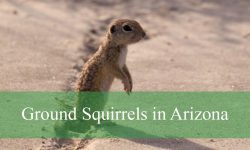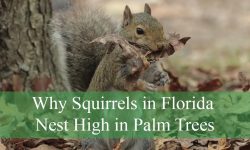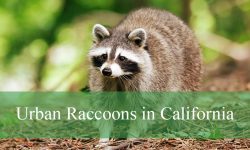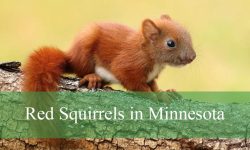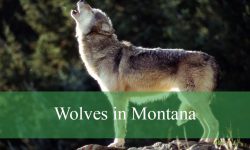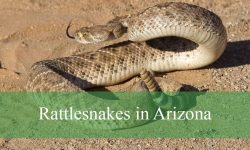The forests and woodlands of Arkansas are home to one of North America’s most iconic birds: the Eastern Wild Turkey (Meleagris gallopavo silvestris). While we may associate turkeys with Thanksgiving tables or rural hunting scenes, these birds lead lives full of fascinating behaviors, surprising adaptations, and important ecological roles. In Arkansas’s diverse habitats—from the rugged Ozarks to the lush bottomlands of the Mississippi Alluvial Plain—wild turkeys reveal hidden truths that most of us never see.
This article will explore in detail the turkey’s world in Arkansas: their history and distribution, habitat and behavior, diet and survival strategies, reproduction and population dynamics, threats and conservation efforts, and finally wrap up with a robust FAQ section to answer common questions about these birds in Arkansas’s forests.
Understanding Turkeys in Arkansas

Historical Presence and Distribution
The wild turkey has been part of Arkansas’s natural heritage for centuries. Tribes such as the Quapaw hunted turkeys for food long before European settlers arrived. In more recent history, turkey populations declined early in the 20th century due to habitat loss and overhunting, but state-level conservation efforts have re-established many populations.
Today, the Eastern Wild Turkey is the only subspecies native to Arkansas. These birds are found across many forested regions of the state, but their density and success vary based on habitat quality, hunting pressure, and climate.
Habitat Preferences in Arkansas Forests
Wild turkeys in Arkansas thrive in mixed pine-hardwood forests, pine-oak ridges, bottomland hardwoods, and forest edges adjoining clearings or fields. Importantly, they favor landscapes with both cover and open space: dense or mature forests for roosting and hiding, and openings or edge zones for foraging and display.
For example, in the Ozark and Ouachita Mountains, management practices such as creating wildlife openings and prescribed burns have been used to enhance turkey habitat by increasing such open-forest interspersion.
Bottomland hardwood forests in eastern Arkansas also support turkeys, although flooding, forest fragmentation, and predator presence can make nesting and brood success more challenging.
Behavior, Diet, and Survival Strategies
Daily and Seasonal Behavior
Turkeys are primarily ground-based birds, but they do more than just roam the forest floor. They roost at night in trees to avoid ground predators—something many people don’t realize.
During the day, they forage over large areas, especially in spring and early summer when poults (young turkeys) require abundant protein sources. In Arkansas’s forests, their movement can cover ridges, valleys, and edges of fields or clearings where food is plentiful and cover is accessible.
Diet and Foraging
The diet of wild turkeys is quite varied and opportunistic. They eat seeds, acorns, berries, insects, small reptiles or amphibians, and other forest floor items. In Arkansas’s hardwood forests, mast (such as acorns and hickory nuts) is a key winter food source. They switch to higher-protein items when raising young poults. Their ability to adapt diet seasonally is one reason they persist in diverse forest types.
Adaptations and Survival Tricks
-
Vision and awareness: Turkeys have excellent eyesight and can detect movement from a distance—giving them a better chance to escape predators.
-
Roosting high: Even though they spend much time on the ground, they fly up into trees to roost at night, gaining safety from ground predators.
-
Group behavior: Outside of breeding season, turkeys often travel in flocks—more eyes and ears mean better early-warning systems against threats.
Reproduction and Population Dynamics in Arkansas
Breeding Behavior and Nesting
Male turkeys (gobblers) engage in elaborate displays during the spring breeding season: puffing up their feathers, fanning tail feathers, and gobbling to attract females (hens). This display often takes place in forest openings or clearings that afford visibility.
After mating, hens nest on the ground, often selecting areas with good cover and nearby foraging opportunities. In Arkansas, research shows that female wild turkeys avoid edge-dominated or fragmented habitats for nests—likely due to higher predator risk.
Nesting success is highly influenced by habitat quality. Nest failure often results from predation, flooding (especially in bottomlands), or inadequate cover. For example, in a study of bottomland hardwood forests, female success rates (successful hatched nests) were quite low (~24 %) although survival of adult females remained high.
Population Trends and Challenges
Despite management efforts, turkey populations in Arkansas show signs of decline or stagnation in many areas. One study noted that male (tom) densities were very low relative to harvest rates in the Ozark and Ouachita regions, suggesting the need for stricter management of both harvest and habitat.
Factors contributing to population concern include:
-
High harvest pressure on males
-
Habitat fragmentation that reduces brood-rearing success
-
Competition or displacement from other species (e.g., feral hogs) in shared habitats.
-
Severe weather events or wet springs that increase poult mortality.
The state wildlife agency, the Arkansas Game and Fish Commission (AGFC), has implemented management plans to monitor and adjust hunting seasons, bag limits, and habitat practices to help maintain sustainable turkey populations.
Importance of Turkeys to Arkansas Forest Ecosystems
Wild turkeys play significant roles in Arkansas forests:
-
Seed dispersal and forest ecology: By consuming nuts, seeds, and berries, and moving across the landscape, turkeys contribute to plant dispersal and nutrient cycling.
-
Prey for predators: Turkeys, particularly poults and nestlings, are a food source for many forest predators (raccoons, foxes, coyotes, birds of prey). Their presence helps support those predator populations.
-
Indicator species: Healthy turkey populations often signal good forest health—because turkeys require a mosaic of habitat types (openings + cover) and clean forest ecosystems.
-
Cultural and economic value: Beyond ecology, turkeys are a valued game species in Arkansas, attracting hunters and supporting conservation funding through licenses and stamps. The AGFC uses proceeds from Turkey Conservation Stamps to fund turkey habitat programs.
Threats and Conservation Efforts
Key Threats
-
Habitat loss and fragmentation: Conversion of forest to agriculture or development reduces the open-forest mosaic turkeys need. In fragmented landscapes, nesting success declines.
-
Overharvesting of males: Excessive harvest of gobblers can skew sex ratios and reduce breeding success. Research in Arkansas mountain regions recommended reducing harvest rates.
-
Predation and competition: In some regions, invasive species or high predator densities (including non-native hogs) reduce turkey access to high-quality brood habitat.
-
Weather impacts: Wet springs, floods (especially in bottomland forests), and poor brood years can cause population dips.
Conservation and Management Strategies
-
Habitat management: Use of prescribed fire, creation of wildlife openings, and maintenance of mosaic forest structure help provide turkeys with needed foraging and breeding grounds.
-
Hunting regulation: Adjusting season lengths, bag limits, and protecting younger birds during recovery phases are tools the AGFC uses.
-
Research and monitoring: Studies track turkey population dynamics, space use, and harvest effects to guide management decisions.
-
Public involvement: Education for landowners and hunters, and programs such as the Turkey Conservation Stamp, help fund and support efforts.
FAQs (Frequently Asked Questions) About Turkeys in Arkansas Forests
What species of wild turkey live in Arkansas?
Arkansas is home exclusively to the subspecies called the Eastern Wild Turkey (Meleagris gallopavo silvestris).
Where in Arkansas are wild turkeys found?
Turkeys inhabit many forested regions of Arkansas including the Ozark and Ouachita Mountains, the Mississippi Alluvial Plain bottomlands, and pine-hardwood forests. They favor areas with a mix of mature trees, dense cover, and open foraging zones.
When is turkey breeding season in Arkansas?
Breeding (or gobbler) season typically occurs in spring. During this time male turkeys display and hens nest soon after. The exact timing can vary by region and year.
How many eggs do turkey hens lay in Arkansas?
Turkey hens in Arkansas generally lay clutches of about 10–14 eggs in mid-spring, one egg per day until the clutch is complete.
How do turkeys raise their young poults?
After hatching, poults accompany the hen and follow her to brood-rearing areas with abundant insect prey. Good brood-rearing habitat is crucial for survival. Poor habitat, severe weather, or high predator pressure can reduce poult survival significantly.
Can turkeys fly?
Yes—despite their bulk, wild turkeys in Arkansas can fly short distances, particularly when roosting at night or escaping predators. They typically roost in trees to avoid ground threats.
Why are turkey populations declining in some parts of Arkansas?
Several factors contribute: habitat fragmentation, high harvest rates of males, competition or displacement by other species (e.g., wild hogs), and poor weather conditions affecting nesting and brood success. Research indicates male densities were very low compared to harvest in some mountain regions, signaling unsustainable conditions.
What can landowners do to support wild turkeys on their property?
Landowners can help by maintaining a mosaic of forest cover and openings (cleared patches, edge zones), using prescribed fire when appropriate, protecting brood-rearing habitat (dense herbaceous cover + insects), and minimizing disturbance during breeding/nesting seasons. Supporting sustainable hunting practices and conservation programs also helps.
Are wild turkeys dangerous?
Generally, wild turkeys are not dangerous to humans in forests if given space. They are wild animals, however, and can display aggression during breeding season (especially males). Observing from a safe distance and avoiding feeding or approaching them is the prudent choice.
Why do wild turkeys matter to Arkansas forests?
Wild turkeys are both ecological and cultural assets. Ecologically, they contribute to seed dispersal, provide prey for predators, and act as indicators of healthy forest ecosystems. Culturally and economically, they are a valued game species, contributing to recreation and conservation revenue through hunting licenses and related activities.
Final Thoughts
Wild turkeys in Arkansas forests are far more than just a hunting trophy or a symbol of holiday dinners. They are finely tuned organisms adapted to life in a complex landscape of forest, edge, bottomland, and ridgeline. Their survival depends on quality habitat, balanced harvest, and healthy ecosystems. By understanding their hidden behaviors and challenges—how they choose nest sites, how they forage, how they respond to flooding or fragmentation—we gain a deeper appreciation for these magnificent birds.
As you walk through an Arkansas woodland and hear the faint gobble echoing across a ridge or catch sight of a flock slipping through the trees at dawn, remember that you’re witnessing a creature shaped by millennia of forest dynamics and human-wildlife interplay. Supporting habitat conservation, being mindful of hunting impacts, and simply valuing wild turkey presence can help ensure that future generations in the Natural State will enjoy not just turkeys on the plate, but turkeys thriving in the wild.

